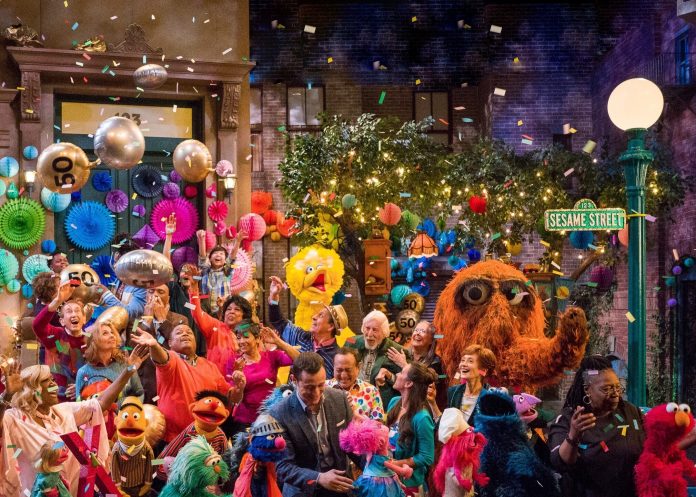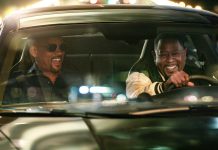
Fifty years ago, beloved entertainer Carol Burnett appeared on the very first broadcast of a quirky TV program that featured a bunch of furry puppets.
Blink and you might miss it, but Burnett followed a cartoon about a witch called Wanda, which was loaded with words beginning with the letter w.
“Wow, Wanda the Witch is weird,” Burnett commented. And then — poof — she was gone.
That show was “Sesame Street” and Burnett, like a lot of kids, was instantly hooked. She would return to the show multiple times, including visits to demonstrate to pre-school viewers where her nose was and to smooch a rubber duckie.
“I was a big fan. I would have done anything they wanted me to do,” she said. “I loved being exposed to all that goodness and humor.”
This first episode of “Sesame Street” — sponsored by the letters W, S and E and the numbers 2 and 3 — aired in the fall of 1969. It was a turbulent time in America, rocked by the Vietnam War and raw from the assassination of Dr. Martin Luther King the year before. The media, like today, was going through disruption.
Newt Minow, who was the Federal Communications Commission chairman at the time, famously said TV was becoming “a vast wasteland.” Like today, there was lots of content, but it wasn’t necessarily quality.
Enter “Sesame Street” creators Joan Ganz Cooney and Lloyd Morrisett, who worked with Harvard University developmental psychologist Gerald Lesser to build the show’s unique approach to teaching that now reaches 120 million children. Legendary puppeteer Jim Henson supplied the critters.
“It wasn’t about if kids were learning from TV, it was about what they were learning from TV,” said Steve Youngwood, the chief operating officer of Sesame Workshop. “If they could harness that power to teach them the alphabet and their numbers as opposed to the words to beer commercials, you may be able to make a really big difference.”
No one else was doing it. Children’s programing at the time was made up of shows like “Captain Kangaroo,” ”Romper Room” and the violent skirmishes between “Tom & Jerry.” ”Mr. Rogers’ Neighborhood” was lovely, but it was mostly teaching social skills.
“There was nothing even remotely that contained any educational component at all for children,” said Phillip Levine, a professor of economics at Wellesley College who has studied the show. “‘Sesame Street’ was 100% about education.”
The show was designed by education professionals and child psychologists with one goal: to help low-income and minority students aged 2-5 overcome some of the deficiencies they had when entering school. Social scientists had long noted white and higher income kids were often better prepared.
So, it wasn’t an accident that the show was set on an urban street with a multicultural cast. Diversity and inclusion were baked into the show. Monsters, humans and animals all lived together peacefully.
Bert, Ernie and the gang made an instant impression on actress Sonia Manzano. She saw a neighborhood that looked like hers. She saw people who looked like her. She would become a cast member, Maria, on the show, starring and writing for it from 1971-2015, including getting married on air.
“I was raised without seeing people of color on television. So, when I was given the opportunity to be a person of color on television, I jumped at it,” said Manzano, who is of Latino descent. “And I think I was successful as Maria because I never forgot that there could be a little kid like me watching television and forming ideas about the world.”
Over the years, “Sesame Street” has welcomed many more. It became the first children’s program to feature someone with Down syndrome. It’s had puppets with HIV and in foster care, invited children in wheelchairs, dealt with topics like jailed parents, homelessness, women’s rights, military families and even girls singing about loving their hair.
It introduced the bilingual Rosita — the first Latina Muppet — in 1991. Julia, a 4-year-old Muppet with autism came in 2017 and this year has offered help for kids whose parents are dealing with addiction and recovery. So important is the show that PETA recently asked for the creation of a vegan Muppet.
“We are a mirror to society here even though we’re dealing with birds and chickens and monsters,” said Matt Vogel, the puppeteer who portrays Big Bird and the Count and who grew up watching “Sesame Street.”
When actor Will Lee, who played the grocer Mr. Hooper, died in 1982, the show explained death to children. When Big Bird lost his nest to a hurricane, the community rebuilt his home. To help kids after 9/11, Elmo was left traumatized by a fire at Hooper’s store but was soothingly told that firefighters were there to help.
“We see a need and we meet that need because I feel like we have a voice that’s loud enough that can do that — that can reach people and make a difference,” Vogel said. “Our mission is to make kids smarter, stronger and kinder and that those lessons that we impart to them stay with them.”
Therapist Jerry Moe, the national director of the Hazelden Betty Ford Children’s Program , applauds the show for helping children handle trauma — addiction, PTSD, death.
“While the numbers and the colors and the sizes and the shapes are all incredibly important, so is that social-emotional development that children need,” he said.
“‘Sesame Street’ deals with the reality of what’s going on with the kids today. And ‘Sesame Street’ does it in such a child-friendly, age-appropriate, developmentally-appropriate way that not only grabs kids’ attention, but also all the providers,” Moe said.
Celebrity appearances — starting with Burnett and now numbering 650 — aren’t just a fun component of the show, they’re part of the lesson. From Janelle Monae to Sarah Jessica Parker, from Anderson Cooper to Danny DeVito — they’re all part of an attempt to lure parents to watch as well.
“When parents watch the show with their kids, the learning is deeper because you have a conversation about what you watched together. You talk about it,” said Benjamin Lehmann, executive producer. “The parents are there to scaffold on the lessons.”
In the adults’ honor are characters who go over the heads of young viewers — Ethel Mermaid, Baa Baa Walters and Alistair Cookie — not to mention spoofs like “Orange Is the New Snack,” ”Grouch Eye for the Nice Guy” and “Upside Downton Abbey.”q



















